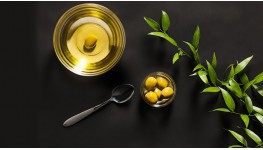Love and compassion combined with sexual satisfaction ... Once you come to your head you can not forget the taste anymore. In my first article about olive oil, I mentioned the tricks in olive oil. In the second article, after explaining the differences between olive oils, I stated that even the highest level of olive oil sold as natural or natural infiltration is not zero error. Defective that is, fermented, osside, moldy ... People in this subject is very conscious and experts in Italy, even if the rate of defective olive oil is 50 percent, I think it is much more. My estimate is around 90 percent ...
Let me state that it is not misunderstood; refined and riviera olive oils should be compared with other refined oils. These are out of my interest and taste. The main reason why our people find olive oil heavy is the use of riviera in meals and even salads.
Factory owners approaching work commercial
There are several reasons why it is difficult to produce natural extra oil. The productive peasant is not conscious. Olives are collected poorly, staying in the field for a long time. The process of olives becoming oil after being brought to the factory is of no interest to the producer. Factory owners are commercially approaching their business. They're not at the machine. Machinists, the workers are delivered to the customer just as the oil. Even the containers of oils in the factories are not even closed. There are two questions that the manufacturer asks the factory side: ne What is the yield? ’,‘ How many kilos of fat is out ’.
Many manufacturers do not care about quality. Major manufacturers mix different quality oils. Some boutique manufacturers give fancy bottles with cool names and put the oils they collect from left to right and market them at very high prices according to quality.
Even if manufacturers want to produce high-quality oil, it is not easy to produce quality oil worldwide. Olive business, like wine. First of all, you're going to be a good oleologist. In other words, you will understand the sensory quality of the olives you have processed, all the dimensions related to taste and smell, you will be able to classify the oils coming from different types or uniform olive groves, and you will have the ability to make both uniform and blend. You control every step in the production process. The collection of olives from the branch to the oil shop, processing into oil there, filtration (I love unfiltered oil but also need to consume them within three months) and packaging ...
Pity is a confusing subject
Let's say you've done a proper natural infiltration. How do we understand quality? We will look at the values we call ‘positive values of oil’. These; fruitfulness, pityfulness and affinity.
Fruit is easy to recipe. Because olives are a fruit. Think like fresh orange juice. It's not difficult, you'il notice it when your nasal burns. Don't think of it as high acid. Just the opposite. Even if the acidity of the oil is too high, you cannot feel it because it is biologically impossible. Free fatty acids do not taste or smell.
Pity is a confusing subject. An oxidized (ransid) oil can be found in a bad sense of pain, but it should not be mixed with a good sense of pity. Pity is a positive value. How do we know? Did you pick fresh green olives from your branch and bite them? Just like that.
Professor Canan Karatay does not say in vain "Early harvest and cold-press natural leaks."
Apart from these three positive main features, there are other things in olive oil. Artichokes, almonds, freshly cut grass, green apples, bananas ... If you look at the quality evaluation parameters used in a serious international competition you will see them. These competitions are held in three categories. Intense fruity, moderately fruity, slightly fruity. Our olive oils are slightly fruity. This is not a bad thing. Just as a light bodied wine is balanced and rich in minerality, it is better than a heavy bodied but cumbersome wine. Our climate and nature are such, need to be respected. In my opinion, the world's richest flavors and flavors are in Italy and Spain. Spain's best oils are made in two phases. So it is more intense because water is not used. Italy has nature; the aroma is very high, both alone and for the blend of tremendously rich olive types donated.
How does a non-oleologist like us, who cares about the taste, understand a very good natural infiltration? Easy. Like sexual satisfaction with love and compassion ...
Once it comes to your taste you can not forget anymore.
We have a lot more to discuss about olive oil. I will process them in the form of Q & A for the next two weeks.
Olive oil worldwide in Edremit Bay
Even in different olive groves in the same field as in the same wine business, different tastes and odors can be found. Climate conditions and soil also affect quality. Olive oil in our country worldwide due to geographical characteristics and microclimate not only in the Gulf of Edremit, but that does not mean that every oil produced in this bay is flawless. Production errors need to be paid attention.






